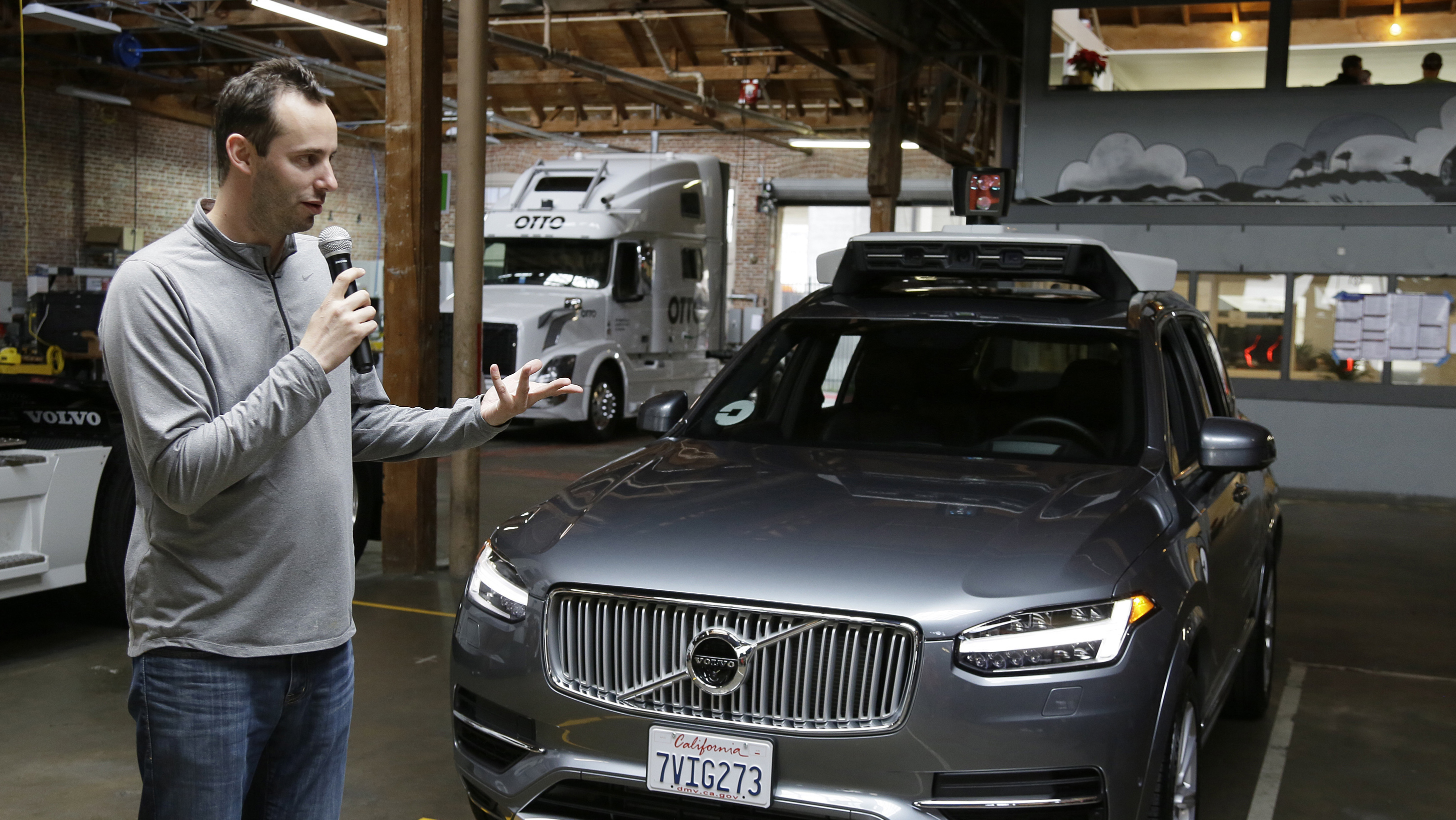A self-driving car pioneer faces charges of stealing secrets from Google

Anthony Levandowski (pictured above) stands accused of pilfering intellectual property from the tech giant and taking it with him to bitter rival Uber.
The news: According to the New York Times, federal prosecutors have charged Levandowski with 33 counts of theft and attempted theft of trade secrets. If he’s convicted, Levandowski could face up to 10 years in prison plus steep fines.
The move stems from a court case brought in 2017 by Waymo, Google’s self-driving car spinoff, which accused the engineer of downloading trade secrets and taking them to Uber when the company acquired Otto, a self-driving truck startup Levandowski had launched after leaving Google in 2016.
The secrets: These included designs for circuit boards for self-driving vehicles and for using a technology known as lidar, which bounces laser light off nearby objects to create 3D maps used to help guide self-driving cars. The legal complaint accuses Levandowski of downloading more than 14,000 files before he walked out of Google.
The divorce: Uber, which planned to develop its own fleet of self-driving taxis, initially stood by Levandowski. But after he had pleaded the Fifth Amendment to avoid self-incrimination in court, it fired him in May 2017 and went on to negotiate a settlement that involved it handing over a small percentage of its stock to Alphabet, Google and Waymo’s parent company.
The defense: After news of the charges broke, Levandowski’s lawyers issued a statement saying he had downloaded the files at a time when he was authorized to have the information, and that they were not passed to any other company.
The legal battlefield: Lawsuits over intellectual property are as common in Silicon Valley as foggy days in a Bay Area summer. But in the self-driving vehicle business, where Silicon Valley startups are tussling with traditional automakers trying to reinvent themselves, the friction is especially intense. The Levandowski case is the first really high-profile legal dustup in the field, but it’s unlikely to be the last.
Keep Reading
Most Popular
Large language models can do jaw-dropping things. But nobody knows exactly why.
And that's a problem. Figuring it out is one of the biggest scientific puzzles of our time and a crucial step towards controlling more powerful future models.
The problem with plug-in hybrids? Their drivers.
Plug-in hybrids are often sold as a transition to EVs, but new data from Europe shows we’re still underestimating the emissions they produce.
Google DeepMind’s new generative model makes Super Mario–like games from scratch
Genie learns how to control games by watching hours and hours of video. It could help train next-gen robots too.
How scientists traced a mysterious covid case back to six toilets
When wastewater surveillance turns into a hunt for a single infected individual, the ethics get tricky.
Stay connected
Get the latest updates from
MIT Technology Review
Discover special offers, top stories, upcoming events, and more.